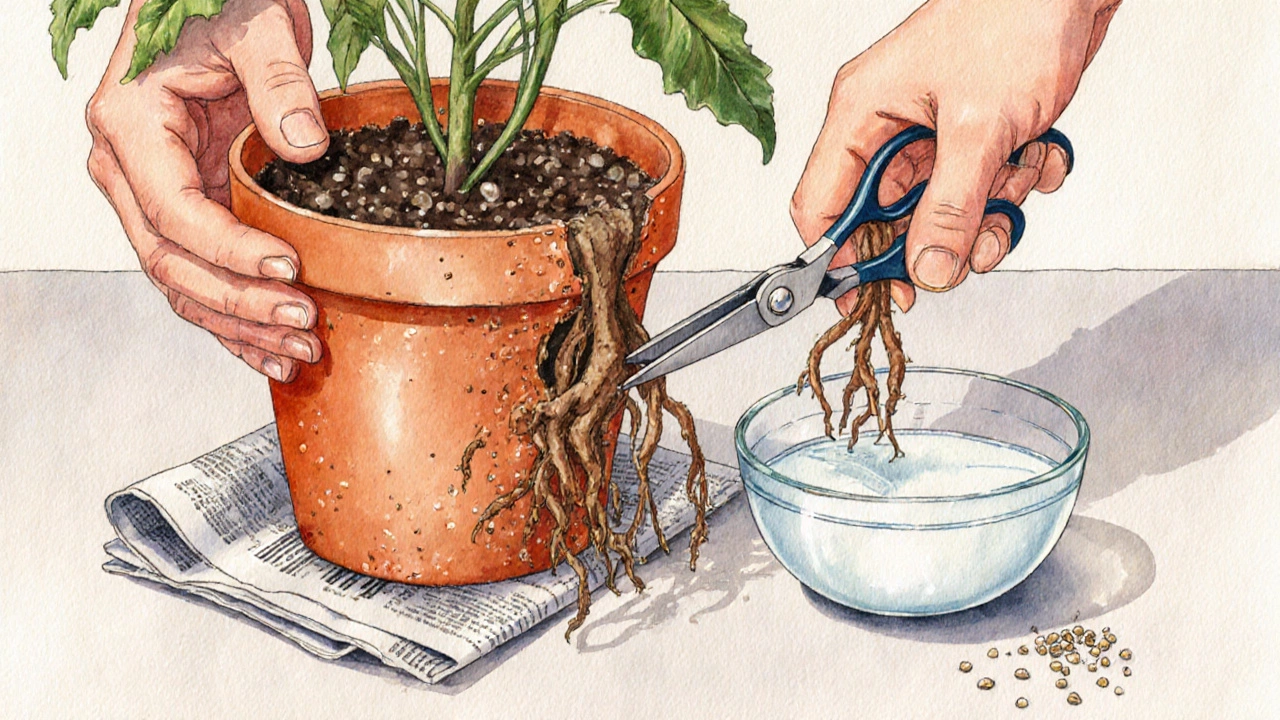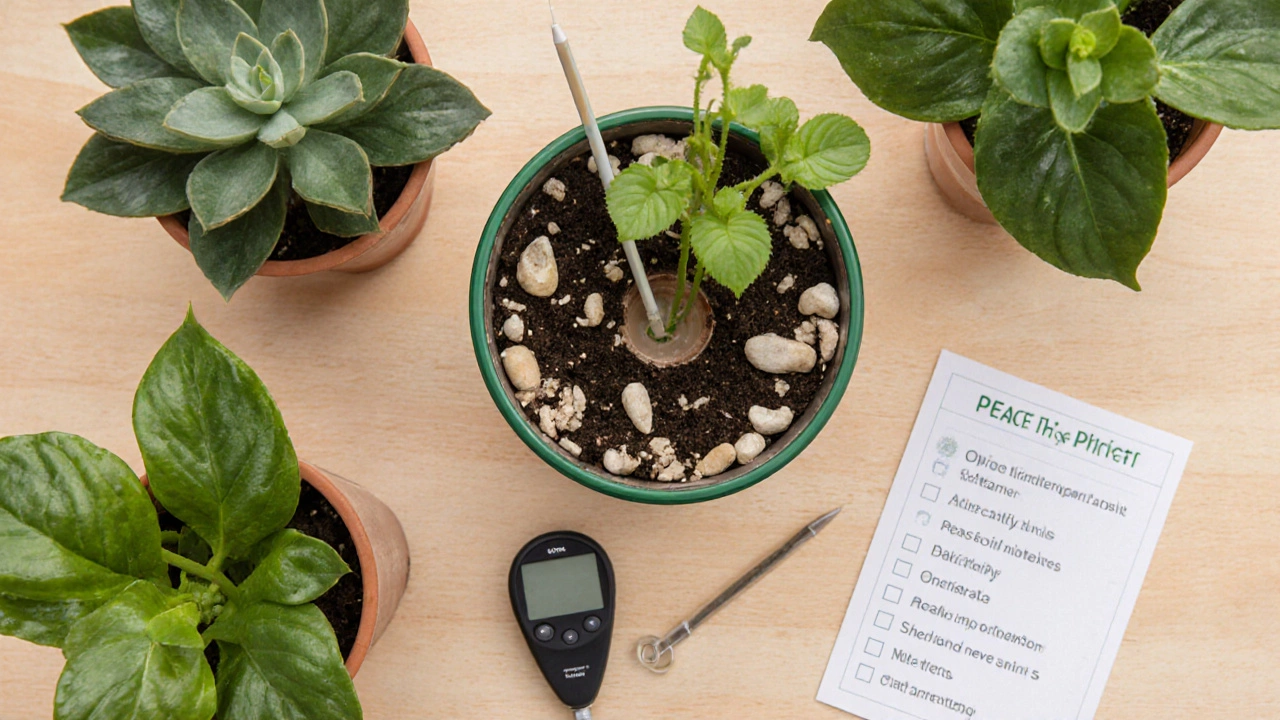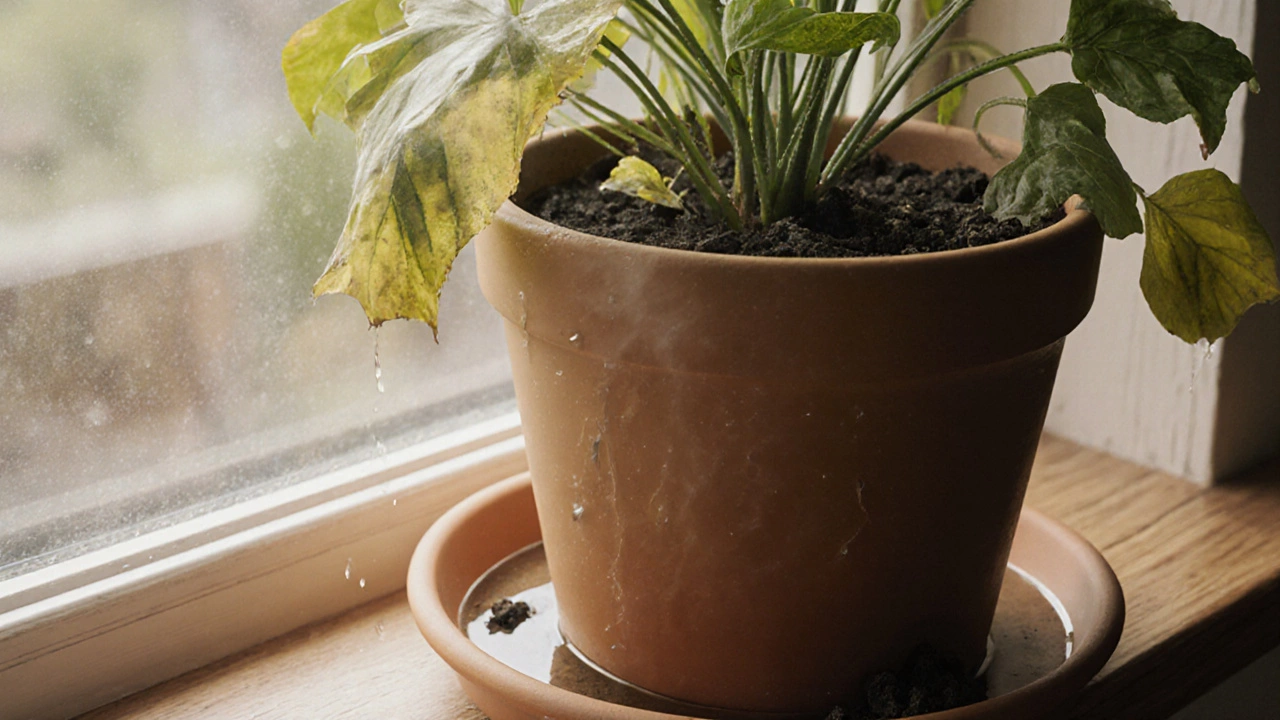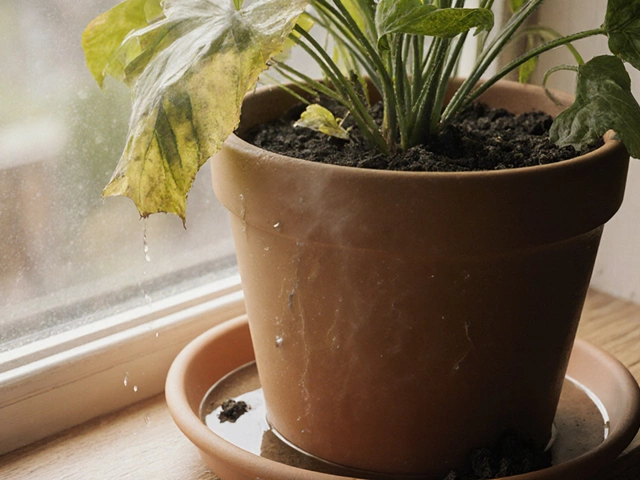Overwatered Plant Recovery Time Calculator
Recovery Calculator
When a overwatered houseplant shows wilting, yellow leaves, or a soggy pot, it’s a clear sign the roots are drowning in excess moisture, the plant’s future hangs in the balance. Knowing how to dry out an overwatered houseplant quickly can mean the difference between recovery and loss.
Spot the Warning Signs
The first step is to confirm that the problem is indeed over‑watering. Look for yellowing or mushy leaves, a constant pool of water in the saucer, and a faint, musty odor coming from the soil. Root rot a fungal decay that thrives in waterlogged soils, killing root tissue and cutting off water uptake often appears as black, mushy roots when you gently ease the plant out of its pot.
Stop the Water Supply Immediately
Once you’ve identified the issue, the next move is to halt any further water. Check that the drainage hole the opening at the bottom of the pot that lets excess water escape is clear; a blocked hole turns a well‑intended pot into a bathtub. Remove any saucer or tray holding standing water, and if the pot sits on a decorative mat, lift it so the pot can breathe.
Remove Excess Moisture From the Soil
Give the soil a chance to dry out naturally. Tilt the pot gently to let any trapped water flow out, then set the plant on a newspaper for a few hours. For stubbornly damp mixes, you can carefully scoop out the top inch of soil and replace it with a dry, well‑aerated blend.
Treat the Roots - Prune and Aerate
If you see signs of root rot fungal decay that thrives in waterlogged soils, killing root tissue and cutting off water uptake, it’s time for a gentle prune. Using sterilised scissors, trim away any brown, mushy roots, leaving only firm, white tissue. After trimming, give the roots a brief dip in a solution of one part hydrogen peroxide to three parts water - this helps curb fungal spores.

Improve Drainage With Perlite and the Right Mix
Mixing in perlite light, porous volcanic glass that improves aeration and drainage in potting media dramatically boosts airflow around the roots. Aim for a ratio of about 20% perlite to 80% potting mix. Speaking of mix, switch to a well‑draining potting mix a blend of peat, bark, and inert materials designed for indoor containers. Avoid garden soil, which tends to compact and retain water.
Repotting: Give the Plant a Fresh Start
When the roots look healthy after pruning, repot the plant into a slightly larger container that has at least one drainage hole the opening at the bottom of the pot that lets excess water escape. Add a layer of small stones or broken pottery at the bottom to further improve runoff. Fill around the root ball with the new airy mix, firm gently, and water lightly - just enough to settle the soil.
Select Plants That Tolerate Moisture Fluctuations
If you’re prone to over‑watering, consider adding species that are more forgiving. Succulents plants that store water in thick leaves or stems and thrive on minimal watering are excellent choices because they quickly signal when they need water - their leaves become shrivelled. Peace lily a tropical foliage plant that tolerates low light and prefers consistently moist but not soggy soil can handle a bit more water, but still shows brown leaf tips when over‑watered. Philodendron a popular heart‑leaf indoor vine that prefers well‑draining mix and occasional drying between waterings is another forgiving option.

Use Tools to Prevent Future Over‑watering
A soil moisture meter a handheld device that measures the water content in the growing medium takes the guesswork out of watering. Insert the probe about an inch deep; if the reading shows “wet,” hold off on watering. Additionally, adopt a consistent schedule: water only when the top 2‑3 cm of soil feels dry to the touch.
Quick Reference Table - How Different Houseplants Respond to Over‑watering
| Plant | Water Needs | Typical Over‑watering Signs | Best Recovery Tip |
|---|---|---|---|
| Succulent (e.g., Aloe) | Low - water every 2‑3 weeks | Wrinkled leaves, mushy base | Let soil dry completely, repot with cactus mix |
| Peace Lily | Medium - keep soil lightly moist | Yellow leaf tips, soggy pot | Trim rotted roots, improve drainage with perlite |
| Philodendron | Medium - water when top inch is dry | Wilting, brown leaf edges | Remove excess water, use well‑draining mix |
| Spider Plant | Medium - water moderately | Soft leaves, root rot | Increase airflow, repot in airy mix |
| Fiddle Leaf Fig | Medium‑low - let soil dry between waterings | Leaf drop, brown patches | Check drainage, adjust watering frequency |
Maintenance Checklist - Keep Your Plant Happy
- Inspect drainage hole weekly; clear debris.
- Use a soil moisture meter handheld device that measures water content before each watering.
- Replace potting mix every 12‑18 months to maintain structure.
- Watch leaf coloration; yellow often signals excess water.
- Adjust watering schedule seasonally - plants need less water in winter.
Frequently Asked Questions
How long does it take for a houseplant to recover after over‑watering?
Recovery time varies by species and how severe the damage is. Small succulents may bounce back in 1‑2 weeks if roots are trimmed, while larger tropicals like peace lilies can take 3‑4 weeks to show new growth.
Can I save a plant that shows root rot?
Yes, if you act quickly. Cut away all visibly rotted roots, rinse the root ball, and repot in a fresh, airy mix. Adding a fungicide or hydrogen peroxide dip can improve chances.
Is it better to water from the bottom or the top?
Bottom‑watering can be safer for plants that dislike soggy crowns, as the soil draws up only what it needs. Just be sure to empty any excess water after 15‑20 minutes.
What’s the best pot size to avoid over‑watering?
Choose a pot only 1‑2 inches larger in diameter than the root ball. Too large a pot holds extra soil that stays wet longer, encouraging root rot.
Should I prune leaves as part of the recovery?
Only trim leaves that are mushy, discoloured, or clearly dead. Removing healthy foliage won’t speed recovery and can stress the plant further.


